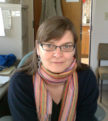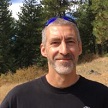Drought-resistant wheat, soybeans WSU’s aim in USDA grant research
will.ferguson
Researchers at Washington State University seek to improve drought-resistant crops, thanks to more than $900,000 in funding from the USDA’s National Institute of Food and Agriculture (NIFA).
Mechthild Tegeder, professor in the WSU School of Biological Sciences, received $494,000 to study the role of important compounds, called ureides, in soybeans. In the long term, her team’s work could enhance soybean productivity and transfer these discoveries to other crops, improving yields.


